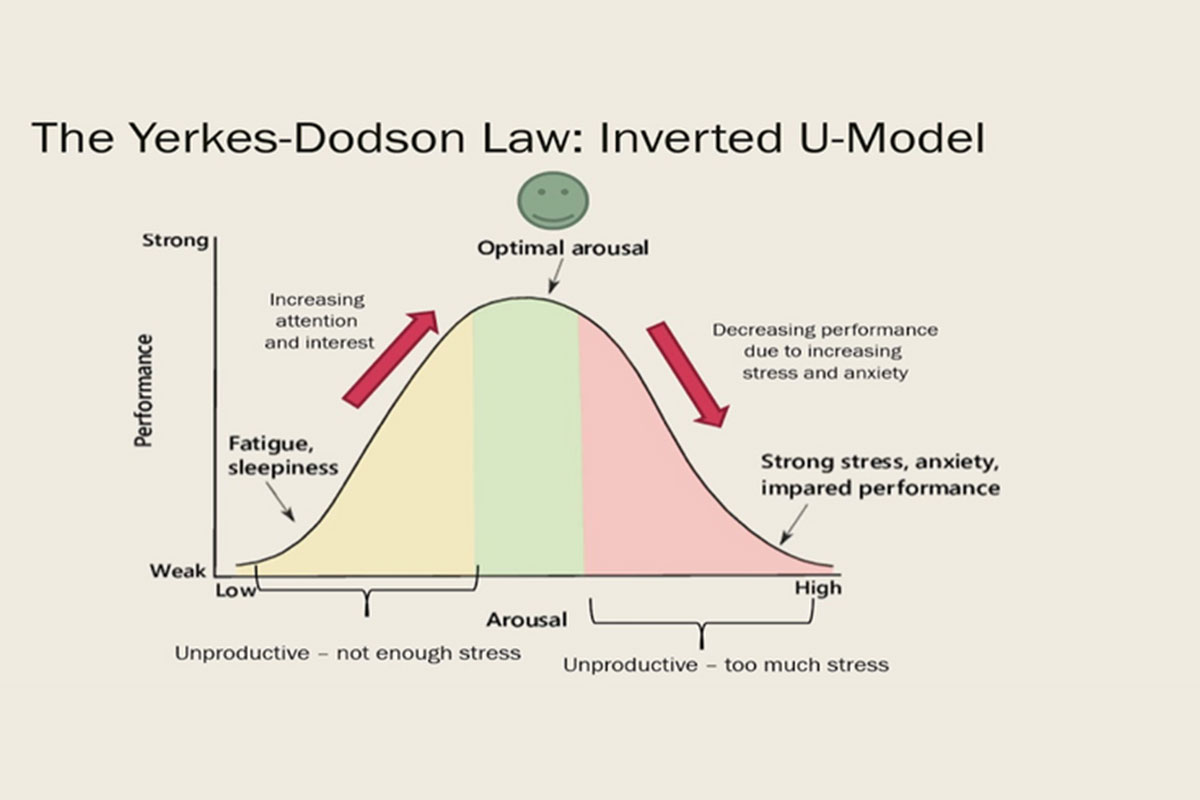By Michelle Beckwith, OTR/L
As we return to the classroom and transition students back to their desks for the school year, we will see many of them struggle with self-regulation, or the ability achieve and maintain an optimal arousal level for the task at hand. The importance of helping children to achieve optimal arousal level is illustrated above. Sensory tools can be very helpful in a child’s quest to achieve optimal arousal. The hard part can be determining the right tools to help each child. This article focuses on situations where it can be especially tricky to detect a child’s arousal level and find the right tool. Always seek your OT’s advice when considering a regulating tool, especially if it is not working.
Did you know there is evidence to suggest that some children who appear hyperactive actually have a LOWER state of arousal than other children? These children can be wiggly and have difficulty remaining in their seat (just like a child with high arousal), but they need this movement to increase their arousal level because it is too low. If these children are provided with deep pressure inputs to help them calm down (such as weighted vests, blankets, or lap pads) they may not benefit or their movement seeking may become worse. These children may benefit more from sensory tools that increase movement, such as a wobble chair, ball chair, or seat cushion.
A wobble chair or seat cushion is also a great option for the sleepy or slouching child who needs to move and wiggle more to increase their arousal level. If the child slouches due to weak core muscles, however, then moveable seating may take away from their ability to attend. They have to focus, instead, on not falling off their chair! This child may benefit from exercises that require activation and strengthening of core muscles (during PE or recess). In the classroom they may benefit from a more supportive (rather than a moveable) chair. A cube chair, beanbag chair, or a chair with arms can provide them with increased postural support, so they will be better able to attend to teacher instruction. Hand fidgets can also help students with focus and attention, but we often hear that they are used as toys rather than tools. To support a child in using a hand fidget as a tool, provide fidgets that look like everyday items. It can be as simple as beads on a pipe cleaner, a small piece of putty, or even a smooth rock. It is important to give ample time for the novelty of using a fidget to wear off; using a ball chair or fidget is exciting for any student initially and may be a distraction, but fidget use becomes a part of the classroom routine, they can be a useful part of a child’s day. See the references and resources below for more suggestions for functional fidgets.
https://www.understood.org/en/learning-attention-issues/child-learning-disabilities/add-adhd/6-types-of-fun-fidgets-for-kids-with-adhd#slide-4
https://www.understood.org/en/community-events/blogs/teacher-tips/2016/12/20/teacher-tip-the-dos-and-donts-of-fidgets-for-kids?utm_source=fbshare&utm_medium=social&utm_campaign=share&fbclid=IwAR3u7wGmaogS1RM8Dihd9wM1q_mxOcTIlvt1Q7I4sutBXP8MTc-zgrsT8p0



